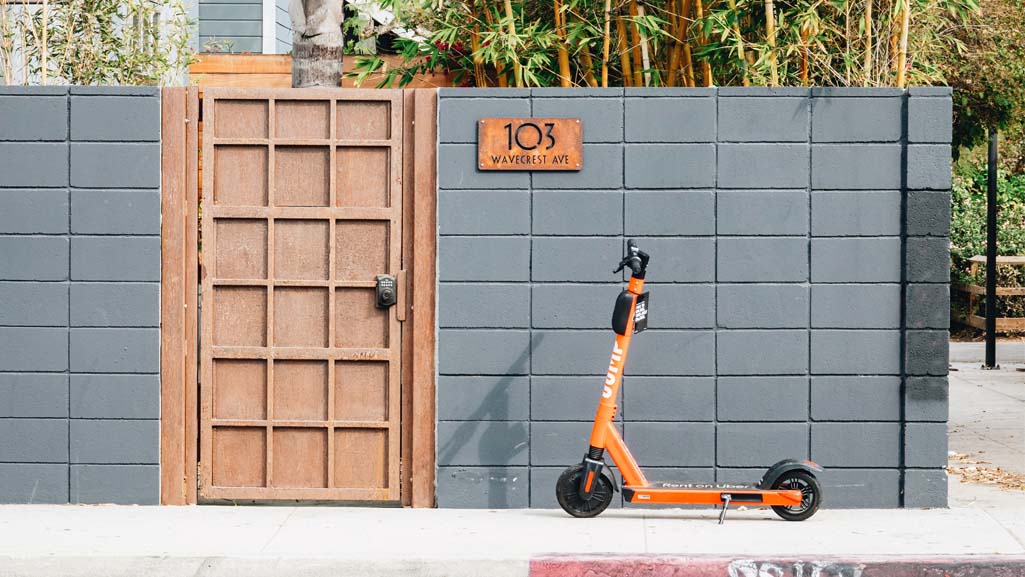E-scooters have literally conquered our cities in the last few years. Ride hailing services such as Uber or Lyft have become an integral part on the roads. More and more promising mobility offers from new providers are pushing onto the market. Studies in Oslo and Lisbon have already looked at how autonomous vehicles and mobility as a service will change our cities in the future. A new study commissioned by the German Federal Ministry of Transport and Digital Infrastructure now dealt with the question how eco-friendly those new mobility modes are. Can they contribute to a more sustainable transport in the future? PTV Group took part in the project together with the Fraunhofer Institute for Systems and Innovation Research ISI and the consulting company M-Five.
“The study is one of the first to deal in detail with the modal shift and environmental effects of new mobility concepts in passenger transport,” explains Rimbert Schürmann of PTV Transport Consult, who was in charge of the project. “Our aim was to find out how new services will develop in interaction with conventional modes of transportation like public transport and private cars, by 2030 and 2050″.
First, the scientists created an extensive market overview of current mobility offerings and the demand for these. They analyzed which various factors influence people to change their mobility behavior.
“Habits are strongly affecting the choice of transport mode and are difficult to change. That’s why we have dealt with the so-called pull-in and push-out factors,” says Jakub Ritschny, also from PTV Transport Consult. “What encourages people to use new mobility modes (pull-in). And what are the factors that push them away from using existing ones (pull-out).”
Two future mobility scenarios
Using these analyses, the researchers formulated two possible future scenarios. In Scenario A, the “Cautious mobility change,” it was assumed that everything almost stays as it is today. Authorities will lower legal barriers for on-demand services, ride hailing and other new modes. But the transport policy and the choice of transport mode will change only moderately in the coming years.
In Scenario B, an “Extensive mobility change” was assumed – a holistic, integrated and thus sustainable turnaround in transportation. In this scenario, authorities promote local public transport as well as cycling and walking.
The researchers examined a total of four different areas: From the big city to urban and rural areas, on through to sparsely populated rural areas.
“We simulated various scenarios with PTV software”, states Jakub Ritschny. “How efficient are ride hailing offers and on-demand services in the different areas? How does mileage, that is, the total number of kilometers covered by all means of transport, change? Is there a shift in the utilization of vehicles?”
Sustainable means holistic
As reference, the researchers compared the futuristic scenarios with a scenarios that included all transport-related measures set in motion by the German federal government before 2017.
In Scenario A, “Cautious mobility change”, new mobility offerings account for 5% of transport service in 2030. In 2050 the share increases to approx. 9%. New and enhanced mobility services initially create new options, which means that they increase the mobility of the population overall. So the mileage, the total number of kilometers traveled with all means of transport increases by 1.2% by 2030. Despite this additional traffic, new mobility offerings can make a contribution to the reduction of greenhouse gas emissions. In Scenario A they decrease at least slightly, by 1.8%.
Even better effects occur in Scenarios B, “Extensive mobility change.” New mobility modes account 11% in 2030 and increased to nearly 17 % in 2050. The mileage decreases by 8 % by 2030. In this period the share of private vehicle usage in the urban areas even drops by nearly 14%. The environmental effects are even stronger than in Scenario A with CO2 emissions being reduced by 13%.
“This clearly demonstrates that new mobility concepts must be considered holistically”, says Rimbert Schürmann. “To achieve sustainable transport, it is not only a question of promoting the new mobility offers. At the same time, conventional, non-motorized and public transport must be strengthened and linked to the new mobility offerings. And private vehicles must become less attractive.”

Hey Stefanie,
This is great! I am a graduate researcher at the Institute of Transportation Studies at University of California, Davis. I am interested in replicating this work for the US using a similar methodology on PTV Vissim and Visum. Having met PTV team members earlier this year at the World Bank Transforming Transportation conference, they had encouraged me to reach out. Could you share the report of this work and/or introduce me to those concerned? Thank you!
Hi Alimurtaza, thanks a lot for your interest in the topic. Unfortunately, the report is only available in German: http://ptv.to/f6
I will write you an email to introduce you to the PTV colleagues involved. Best, Stefanie